Broome - Western Australia
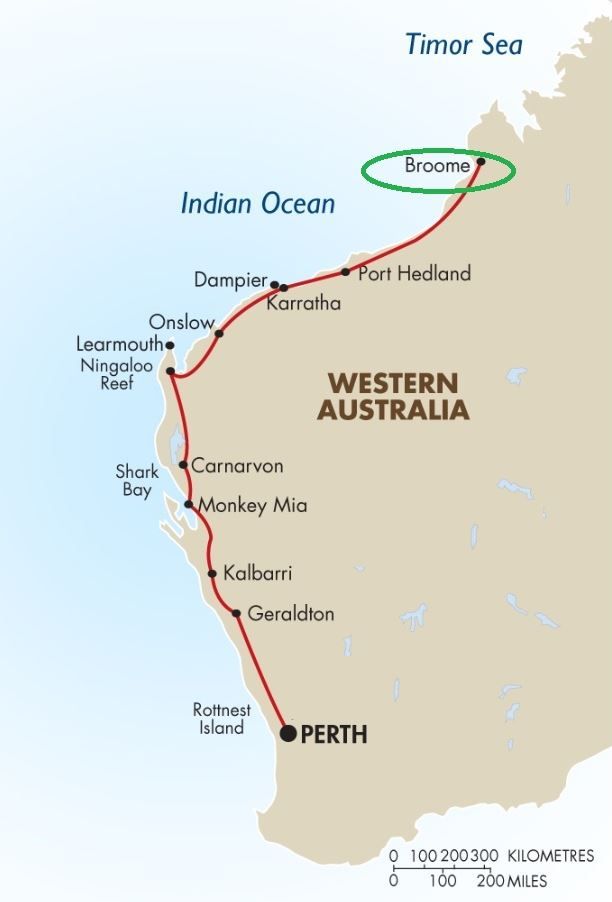
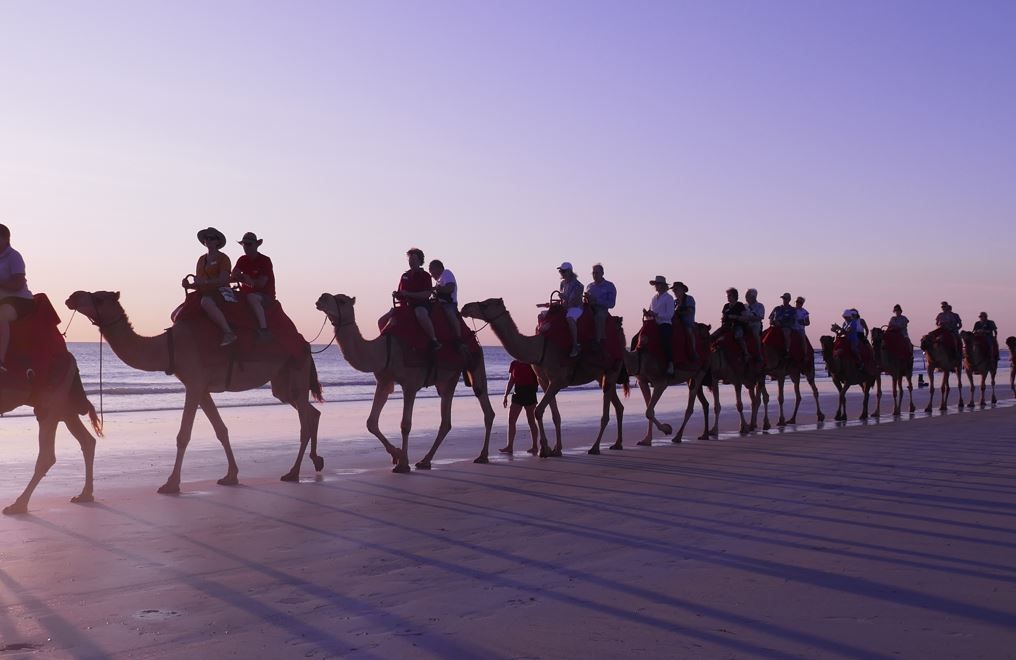
For those of you that follow my posts, you would know I am a keen traveller, not just overseas but also in my own country - I love Australia.
Recently I spent two weeks travelling from Broome to Perth on a coach tour and I thought you would be interested in some of highlights.
Let’s start with Broome, a multi cultural city rich in history, located in the north of Western Australia, part of the Kimberley region. It’s a long way from populated cities - Perth is 2000kms away while Darwin is a little closer - a mere 1800kms.
To the traditional landowners, this area is home to the Yawuru people
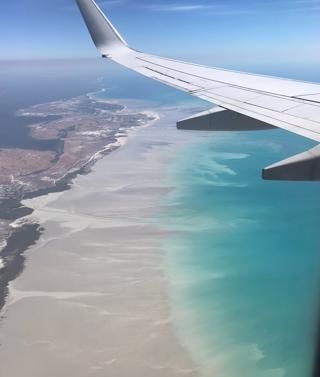
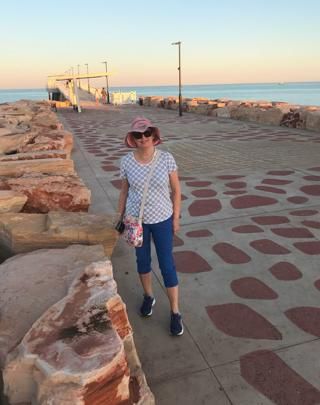
The blue of the Indian Ocean greeted us as we came in to land at Broome airport. The state of Western Australia is the 2nd largest sub division of land in the world and has 20,000 kms of uninterrupted coastline, considered to be in the top 4% of intact shorelines in the world - comparable with Antarctica and the Arctic, while the tropical woodlands are part of the most extensive and least spoilt tropical savannah in the world.1
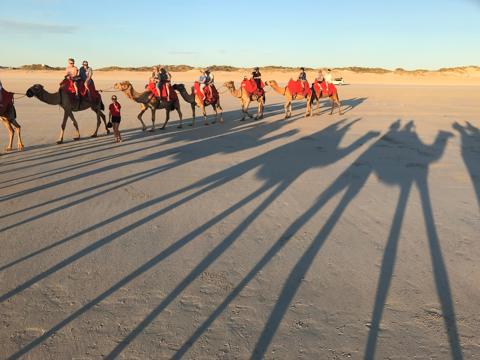
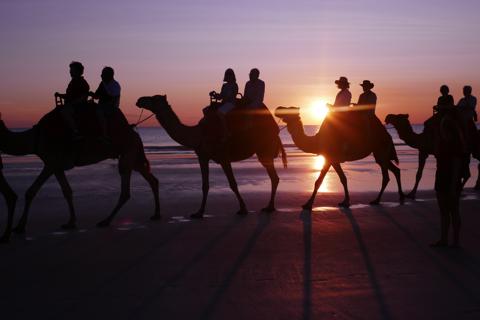
Like many remote towns Broome is a quirky place - people must give way to traffic at pedestrian crossings, ants provide a more accurate weather forecast than the Weather Bureau and the houses have no letter boxes - how social to collect your mail from the Post Office and catch up with the local doings! No street numbers either, just look out for your friend’s car.
Camel trains are a normal sight at the beach, toe nail colour is more important than shoes and tide times more sacred than the TV guide! Tides are huge here - the biggest tides in the southern hemisphere with a difference between high and low of around 10 metres. Every week a vehicle or two is seen floating in an estuary or being dragged out to sea by the tide - locals get caught out just as easily as tourists.
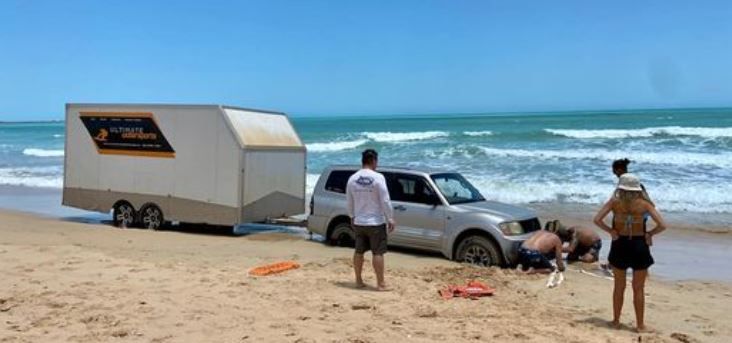
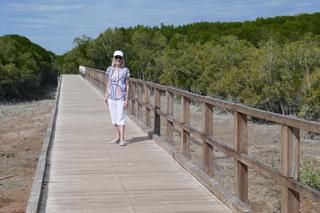
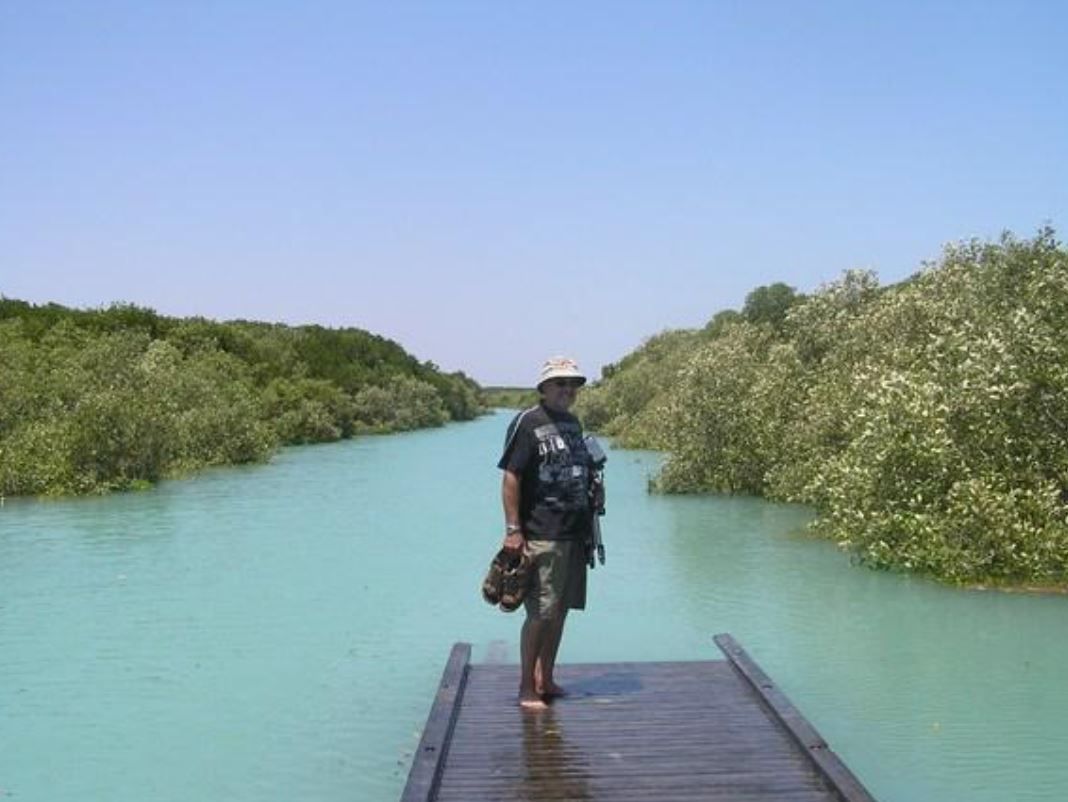
In the early 20th century, Broome was the world’s pearling capital, producing 80% of the global mother of pearl (nacre) used to make buttons and jewellery. It was such a valuable commodity that any pearls found in the shell were only viewed as a bonus.
By 1950, plastic buttons were cheap and the industry focused on cultivating pearls, with pearl shell becoming a by-product. We had a chance to visit the Willie Creek Pearl Farm.
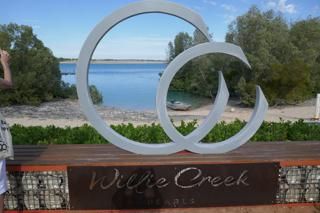
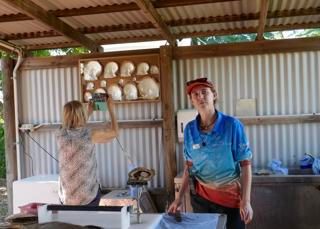
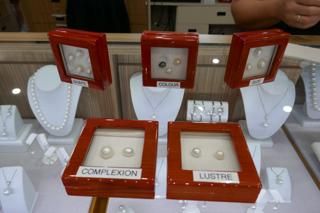
Having visited this farm in 2014, I was impressed to see the tour was even more comprehensive and professional; Fran explained all the steps that go into seeding and maintaining of healthy oysters to the harvesting of what they hope are beautiful pearls.
It was exciting to learn that Willie Creek Pearl Farm is working with the Uni of WA in developing technology to use nacre as an ingenious natural bone substitute, which will be used to rebuild human bones after trauma or diseases. Pearl shell will again become a valuable commodity in Broome’s economy.
Heading back into Broome we explored the town. The Sun Picture Theatre is the world's oldest outdoor movie theater dating back to 1916. Its a unique experience reclining in deck chairs under the stars - not only can you enjoy a movie or two, free sound effects are no extra charge - planes from the nearby airport fly straight over the top!
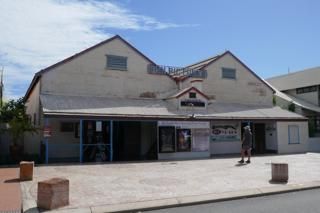
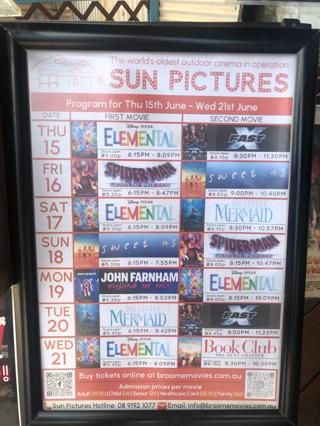
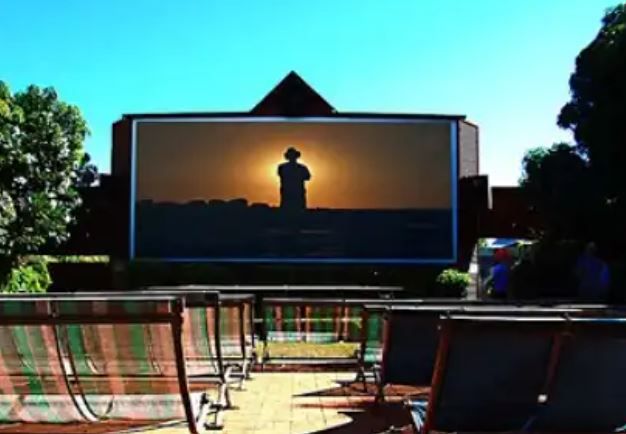
Modern sculptures are dotted about and Matso's Brewery is a local institution - everyone drops in to enjoy their refreshing ginger beer or indulge in a cold ale.
Broome is a hot place all year round, seasons are divided into hot and dry, hot and humid or hot and wet! In fact the indigenous people identify 6 seasons, which I will cover in a future post.
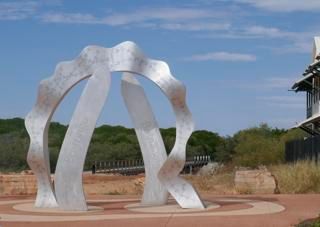
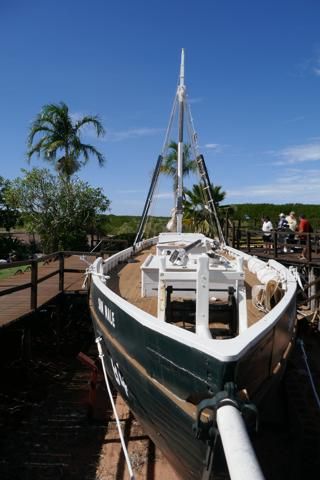
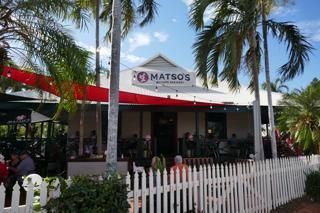
Most Australians do not realise that in March, 1942 Broome experienced the first of four Japanese air raids it would face during WWII. During the raid 24 aircraft were targeted and destroyed, including 15 flying boats that were sitting in the bay having stopped in Broome to refuel.
While the death toll remains unknown, it is believed that at least 89 people died during the raid, including American, British, Dutch, Indian and Japanese military personnel and civilians.2
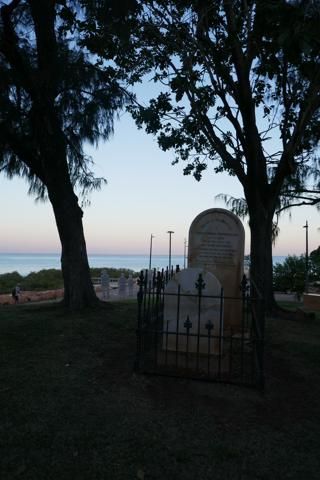
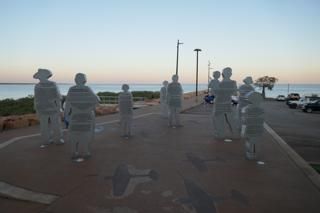
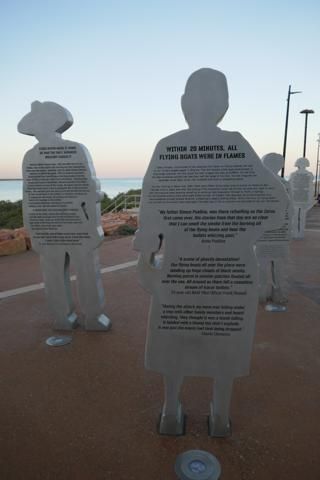
At Town Beach there is an artwork to commemorates this attack, with a small cemetery nearby, as shown above.
The plaque reads:
9 Zeros, 9 Stories
Stands as a silent legacy to those who lost their lives and the impact on this remote Australian community.
A collaboration between Perth-based Paula Hart and Broome local Chris Maher that aims to reveal and enhance the history and curiosity of the many perspectives of the Broome Airaid story. In the past War Memorials have tended to hero the leaders or remember the deceased. However this approach often misses the multifaceted human stories behind these episodes.
Chris spoke with a broad cross-section of the community to learn and appreciate the tangle of human stories behind the incredible event. Stories of bravery, camaraderie and bereavement mix with a true sense of the Broome experience.
To create authenticity and a liveliness in the silhouette Paula looked to the photos and stories of the Dutch, Japanese, Indigenous, Military, White Australian and American people impacted by the events of that day.
The nine figures stand less than 2 km from, and looking out to, the side of the wreck of the Catalina FV–N. The figures stand among the silhouette of nine zeros arranged into three Shotai flight formations depicted coming from the south west the flight path taken on 3 March 1942.
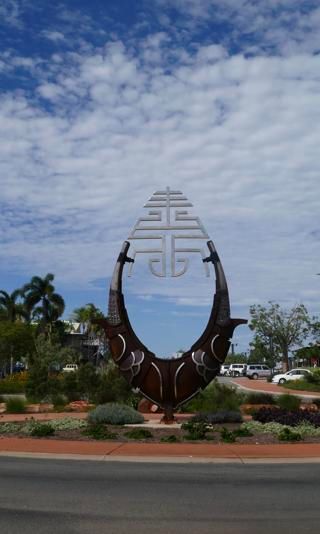
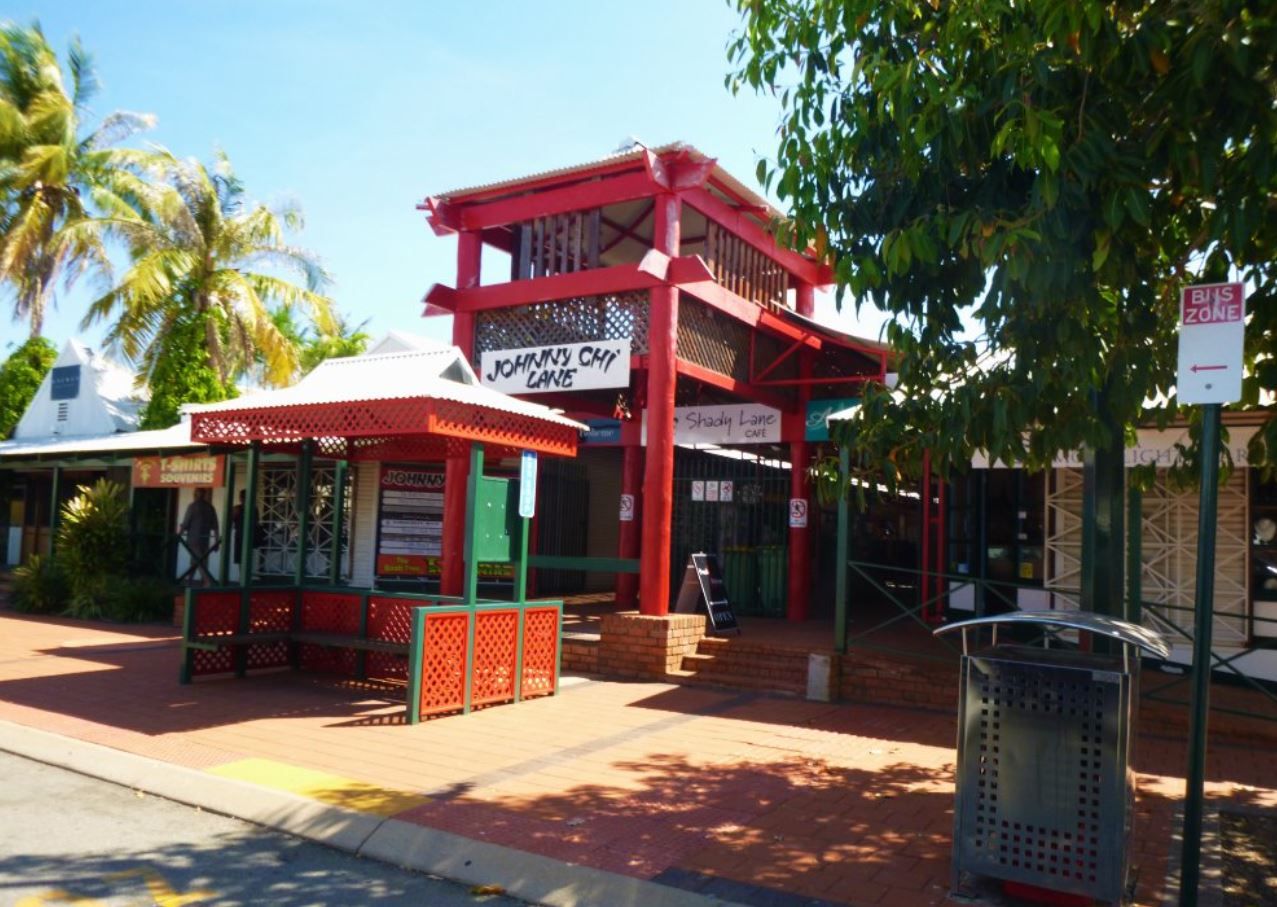
Chinatown has been the multicultural heart and soul of Broome since the pearling crews set up their first camps and corrugated tin sheds in the 1880s. It was fun to wander through the boutiques and admire the sites of historical significance.
Fusion - Interwoven Culture - stands as a welcome to Chinatown, created by Alex and Nicole Mickle in response to the pearling heritage that build Broome. The plaque reads in part:
Life in China, during the pearling heyday was busy and diverse, a predominantly Asiatic business quarter with a lively jumble of merchants, emporiums, eating and boarding houses. Everyone came together to share skills, language, traditions, food, music, and kinship. This created common threads that are interwoven in the community.
The sculpture has a curved open form that echoes a pearl shell a boat hull, a tear or water droplet. On each side basketry encases, pearlshells and timbers are bound with pitched rope, just like the skilled craftsman of traditional pearling luggers.
At the apex, a unique symbol, based on ancient ideograms, to connect the earth with the sky, the ocean with the stars, family with ancestors and people with place.
Broome has a lot to offer and is worth a visit if you are ever in this part of Australia.
The short promotional video below, gives you just a taste.
Posts published soon will cover some of the wildlife and beauty as I travel south towards Perth.
Credits
1. Natgeokids.com
2. broomemuseum.org.au/
